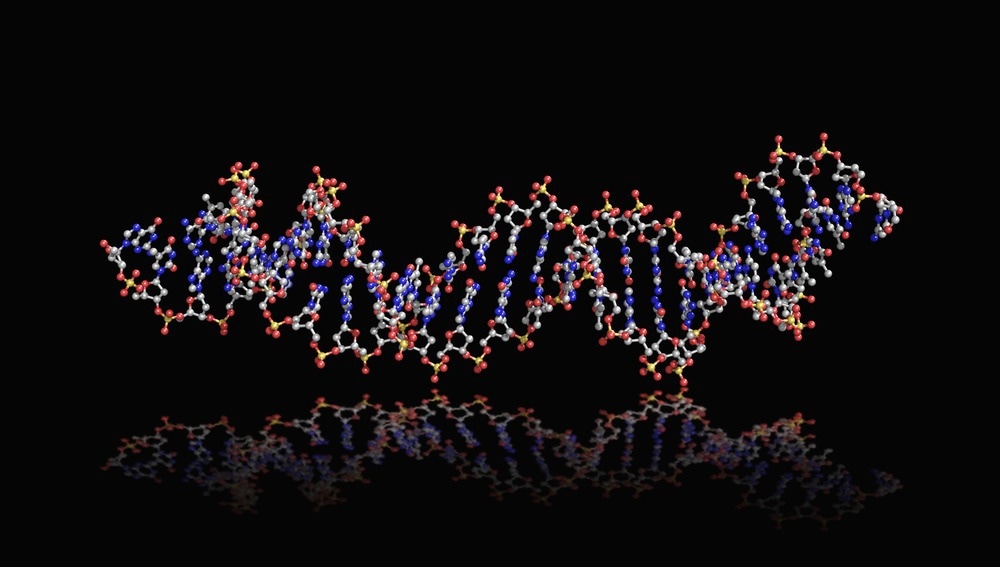Cancer is a disease that affects millions of people worldwide and has one of the highest mortality rates of any other condition. Despite advances in medical technology and treatments, cancer remains a major public health concern, causing a significant number of deaths each year. Aptamers, which are nucleic acids, have gained prominence as cancer diagnostic and therapeutic tools.

Image Credit: Huen Structure Bio/Shutterstock.com
One of the challenges in combating cancer is the need for early detection, which can greatly improve the chances of successful treatment. However, current detection methods can be invasive, expensive, and time-consuming, leading to delays in diagnosis and treatment.
Fortunately, researchers are exploring new and innovative ways to detect and treat cancer, including using aptamers. Aptamers are short, single-stranded DNA or RNA molecules that can bind specifically to target molecules, such as cancer cells or cancer-specific biomarkers. This specificity makes them a promising tool for detecting and treating cancer.
Aptamers are often referred to as "chemical antibodies" because they can recognize and bind to a target molecule, similarly to how an antibody binds to an antigen.
How Aptamers Work in Cancer Detection
Aptamers are generated using a process called Systematic Evolution of Ligands by Exponential Enrichment (SELEX), which involves selecting aptamers with increasing binding affinity through multiple rounds of selection and amplification.
The structure of aptamers can vary depending on the target molecule they are designed to bind to, but they generally have a three-dimensional structure that allows them to interact with their target. This structure is determined by the specific sequence of nucleotides that make up the aptamer and can include loops, stem structures, and other features that allow for specific interactions.
The function of aptamers is to bind to their target molecule, often with high affinity and specificity, and to perform a specific biological function. This can include inhibiting the activity of a target molecule, delivering a therapeutic agent to a specific location in the body, or detecting the presence of a specific molecule in a sample. In the case of cancer diagnosis, the aptamers will bind to cancer cells or cancer-specific biomarkers.
Many cancer cells have specific surface receptors that are overexpressed, which aptamers can target. An example of this is the epidermal factor receptor (EGFR). An aptamer targeting EGFR can bind to cancer cells expressing the growth factor, leading to downstream effects that inhibit cell growth and survival.
Advantages of Using Aptamers in Cancer Detection
Currently, the main traditional cancer detection methods are imaging and biopsies. While imaging techniques such as X-rays or MRI can provide an overall picture of the affected area, they may not be able to detect very small tumors or biomarkers at low concentrations like aptamers could. Although biopsies are highly specific in detecting cancer, they are invasive and require surgery in a lot of cases which can pose additional risks to the patient.
Aptamers have many properties that are advantageous for their use in diagnostics. They have high specificity, allowing for highly accurate detection in complex biological samples. Additionally, they can be engineered to target proteins, peptides, small molecules, and even whole cells, making them highly versatile for detection.
They can be synthesized using standard chemical techniques, making them more cost-effective than other detection methods, such as antibodies.
Aptamers offer a non-invasive and highly specific method of detecting cancer biomarkers; however, the choice of diagnostic method is reliant on the patient's individual needs and the specific type of cancer being detected.

Image Credit: Lightspring/Shutterstock.com
Current State of Aptamer-based Cancer Detection
Aptamer-based cancer detection is a field that is rapidly evolving and showing great potential. Several companies and academic institutions are carrying out preclinical studies and research on aptamer-based cancer detection.
The York-based biotech company Aptamer Group is conducting a project that involves developing an aptamer-based biosensor for the early detection of pancreatic cancer. The project is called "APTPLEX" and is a collaborative effort with academic and clinical partners, including the University of Liverpool, the University of Oxford, and the Liverpool University Hospitals NHS Foundation Trust.
A 2020 study showcased an aptamer-based assay that detected circulating tumor cells in blood samples from breast cancer patients. Compared to the conventional antibody-based method, this assay using aptamers was found to have higher sensitivity and specificity.
Challenges and Limitations
While aptamers show great promise as a cancer detection tool, several obstacles must be overcome before they can be widely used, including stability, reproducibility, and scalability.
Aptamers may be unstable in specific biological fluids, and their effectiveness can be impacted by enzymes, such as nucleases, that are present in the body. Generating aptamers can be a complex process, and their binding characteristics may differ between batches, making it difficult to reproduce results.
Future Directions
Future research in the field of aptamer-based detection encompasses a range of diverse directions, such as developing more stable and more specific aptamers, optimization of aptamer production methods to make them more efficient and cost-effective, and combining aptamers with other technologies such as imaging or microfluidics, to improve the accuracy and sensitivity of detection methods.
Using aptamers in cancer detection is a promising area with great potential for revolutionizing cancer diagnosis and treatment. While there are still some obstacles and limitations to overcome, the use of aptamers has the potential to greatly benefit cancer patients by enabling earlier and more accurate diagnosis, more precise and effective treatment, and improved outcomes.
Sources:
- Adachi and Nakamura (2019). Aptamers: A Review of Their Chemical Properties and Modifications for Therapeutic Application. Molecules, 24(23), p.4229. doi:https://doi.org/10.3390/molecules24234229.
- Han, J., Gao, L., Wang, J. and Wang, J. (2020). Application and development of aptamer in cancer: from clinical diagnosis to cancer therapy. Journal of Cancer, [online] 11(23), pp.6902–6915. doi:https://doi.org/10.7150/jca.49532.
- Ruiz Ciancio, D., Vargas, M., Thiel, W., Bruno, M., Giangrande, P. and Mestre, M. (2018). Aptamers as Diagnostic Tools in Cancer. Pharmaceuticals, 11(3), p.86. doi:https://doi.org/10.3390/ph11030086.